Market Pulse: ETH 2.0 Stakers Are Underwater
The Ethereum 2.0 upgrade is one of the most anticipated, and most watched events in digital asset industry. However, with staked ETH locked up, and market prices declining over 75%, the vast majority of stakers are now firmly underwater on their position.
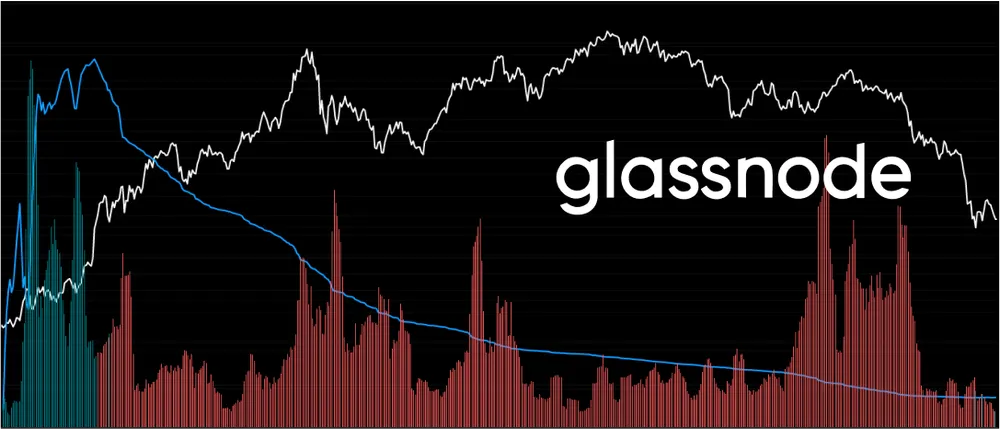
The Ethereum 2.0 upgrade is one of the most anticipated, and most watched events in the digital asset industry. The transition from the current Ethereum consensus mechanism of Proof-of-Work to Proof-of-Stake is a major technical and engineering feat.
With the Beacon Chain operational since December 2022, many Ethereum investors have deposited their coins to operate a validator. Each validator requires a stake of 32 ETH and can be operated by either solo staking, via a staking pool (e.g. Lido, Rocket Pool), or via exchanges.
To become a validator, investors must deposit their 32 ETH into the 2.0 contract, however, as yet there is no date at which these coins can be withdrawn. Nevertheless, the deposit contract has seen a consistent inflow of coins since going live in November 2020.
The total ETH deposited has now reached 12.98M ETH, which is over 10.9% of the circulating supply. A total of 8.02M ETH (62%) was deposited before the Nov 2021 market ATH, and the remaining 38% was deposited after.

At the November peak, the total USD value of staked ETH reached $39.7 Billion, representing 263,918 network validators. However after the ATH, the USD value in the 2.0 contract dropped by -$25.65 Billion. This is despite an additional inflow of nearly 5M ETH and puts the USD value of staked ETH 65.2% lower than at the ATH.
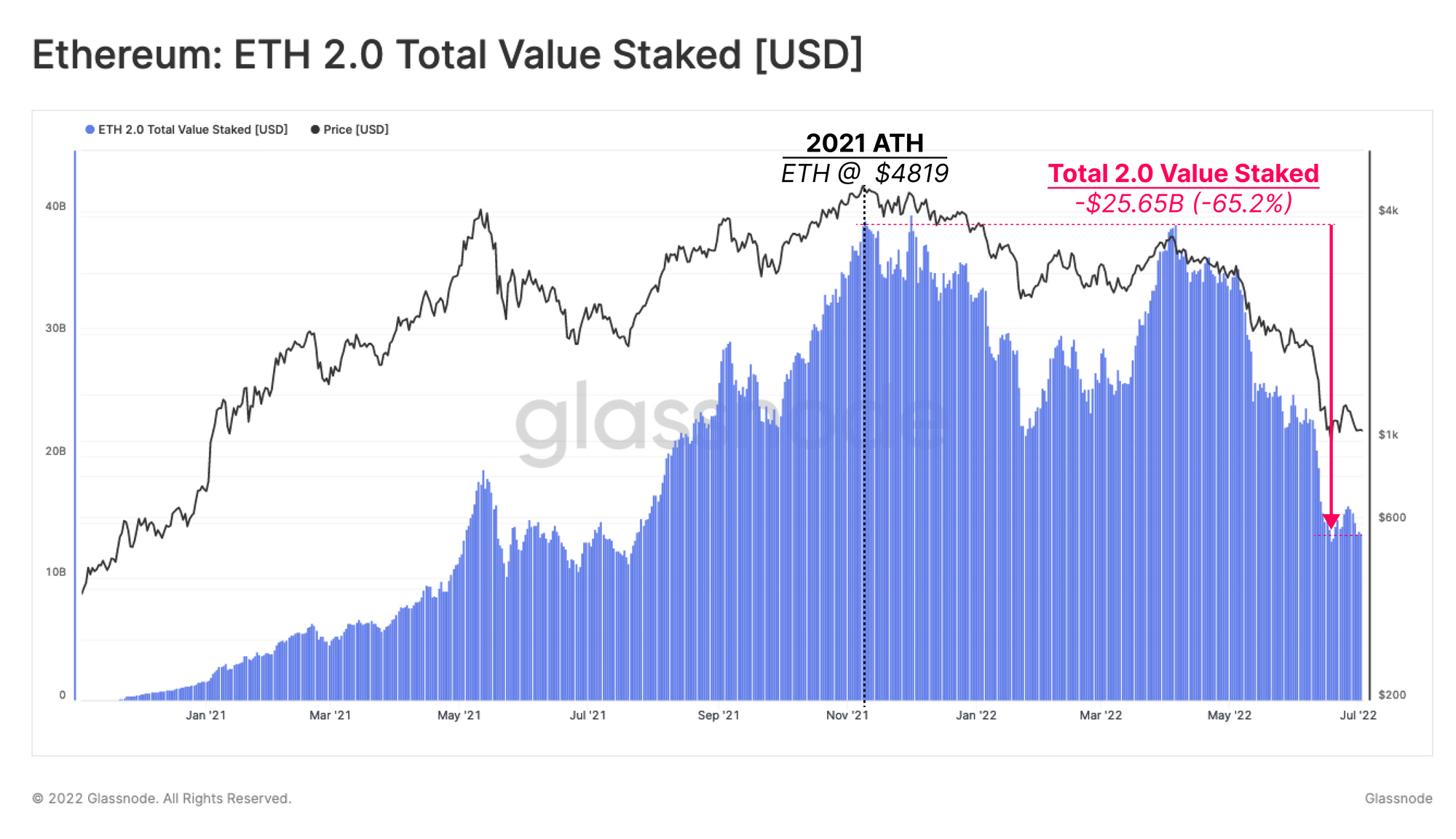
With ETH prices plunging to levels below 2018 ATH, the has been a notable slow-down in 2.0 deposits. Throughout 2020 and 2021, it was common to see between 500 to 1,000 new deposits of 32 ETH per day.
Currently, the weekly average number of deposits has dropped to just 122 per day, which is the lowest it has been to date.
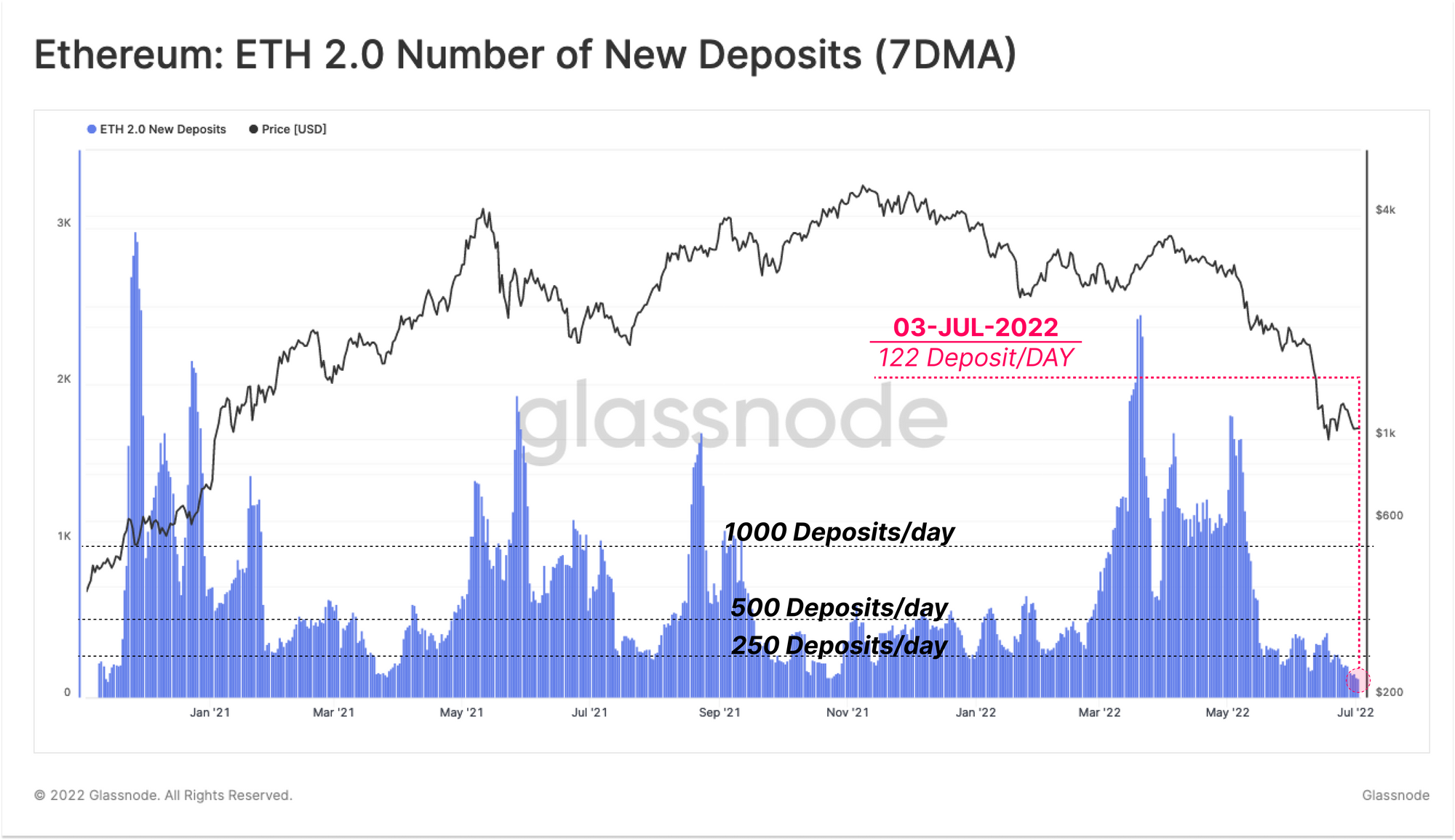
Aside from fear and uncertainty across the market, another reason may be the somewhat poor rate of profitability that has been experienced by ETH stakers to date.
Since ETH cannot be withdrawn yet, we can calculate the value of ETH at the time it was deposited (called the Realized Price). We can see that ETH deposits were sent into the contract at an average price of $2390.
With spot prices currently at $1,060, this means ETH 2.0 stakers are on average holding a loss of -55%. If we compare this to the Realized Price for the entire ETH supply, 2.0 stakers are currently shouldering 36.5% larger losses compared to the general Ethereum market.
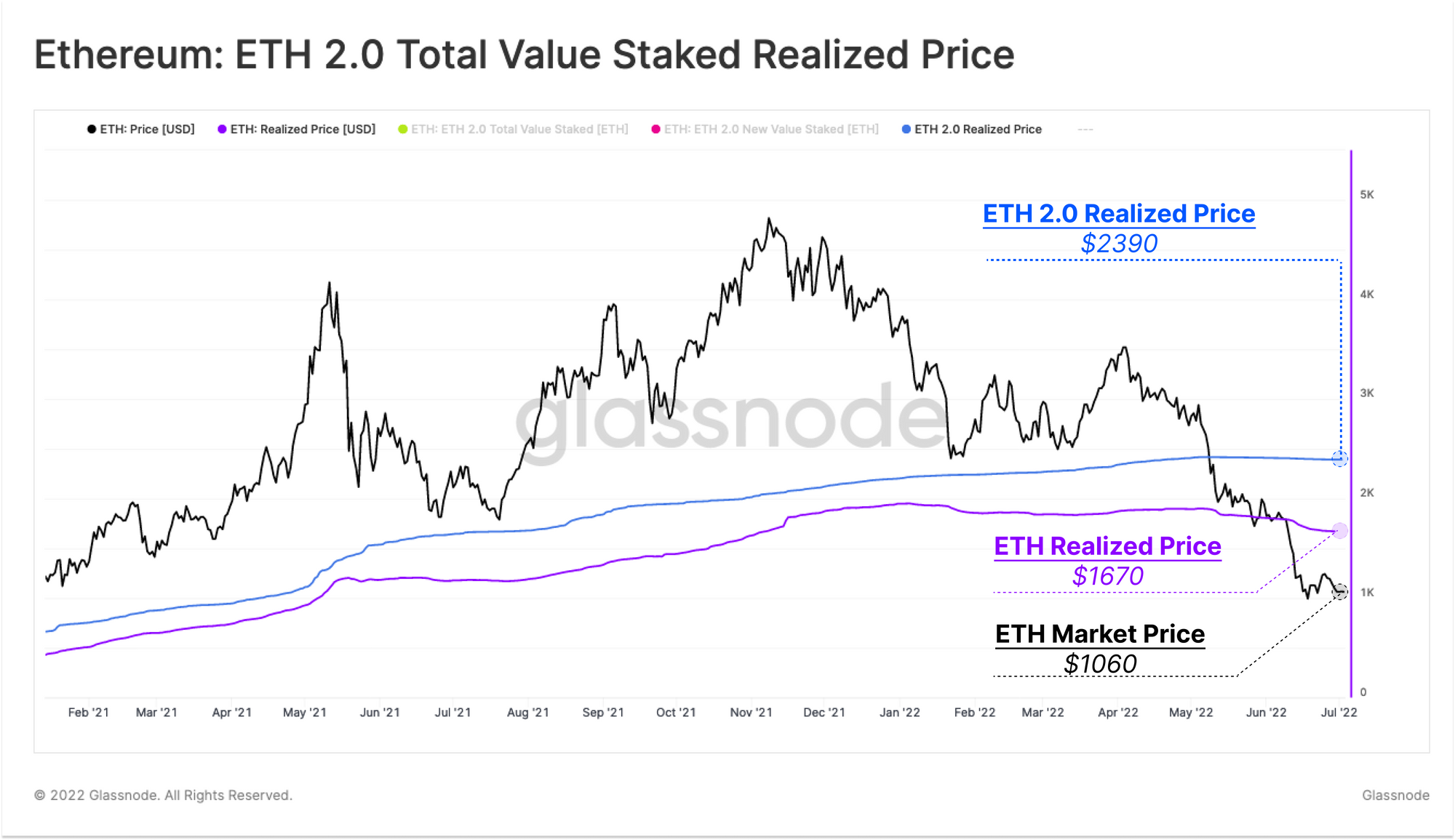
Lastly, we can see that almost all of the 2.0 deposits which are in profit today, were made as far back as Jan 2021, at a time when ETH was under $1,000. As of today, just 17% of the ETH deposited are in profit, with these deposits shown in blue below.
With ETH 2.0 staking yield currently at around 4.2%, a decline in overall ETH token price of 55% below the cost basis of the average staker, this perhaps explains, in part, the overall slow-down in deposit activity.
A key takeaway from this study, is the observation that investors who utilised liquid staking derivatives like Lido, or trade-able ETH 2.0 tokens on exchanges were likely better able to hedge downside price risk. This and highlights why the demand for these liquid staking derivatives has been so high, alongside the ability to use as collateral in DeFi applications.
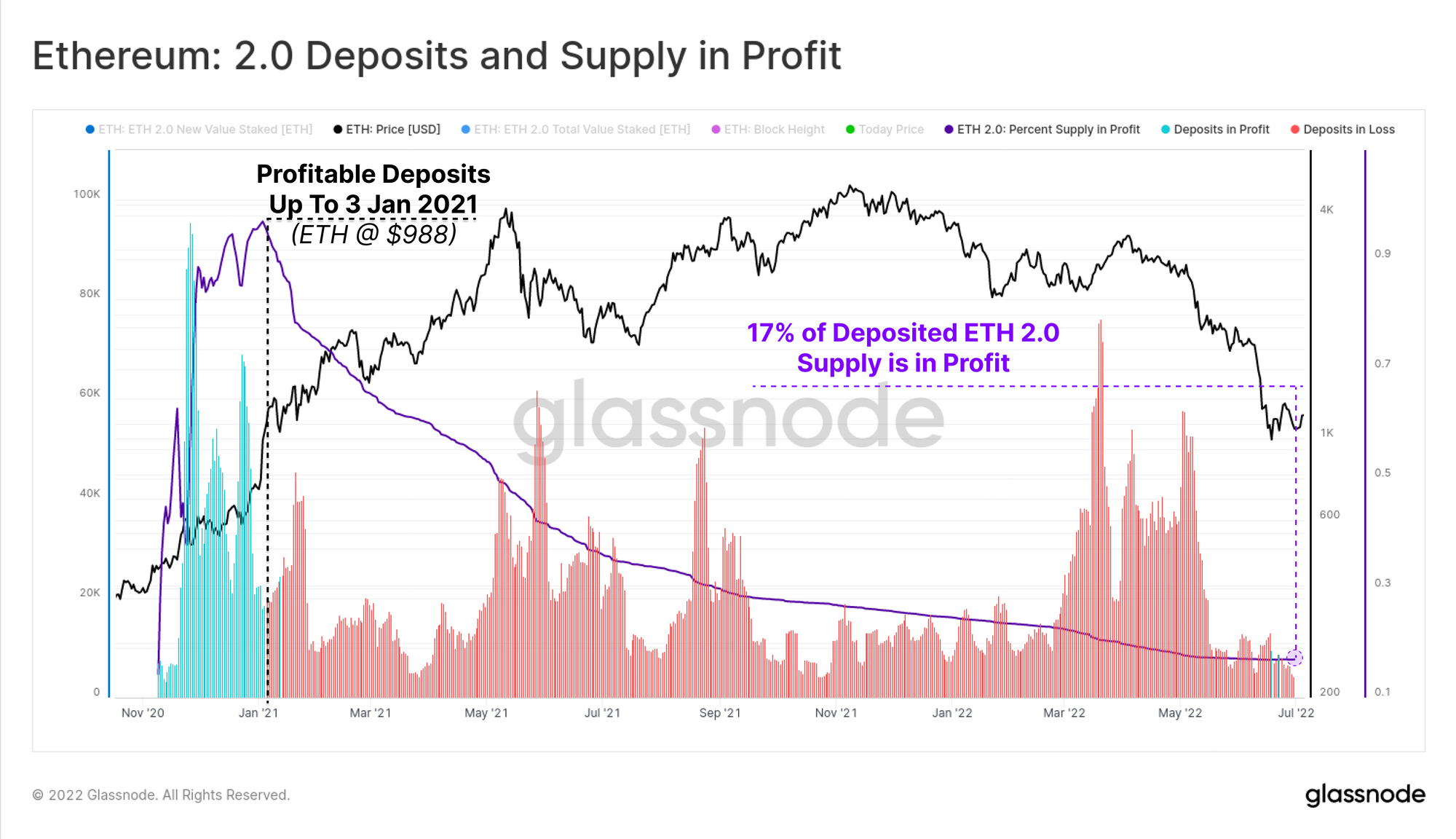

- Follow us and reach out on Twitter
- Join our Telegram channel
- Visit Glassnode Forum for long-form discussions and analysis.
- For on-chain metrics and activity graphs, visit Glassnode Studio
- For automated alerts on core on-chain metrics and activity on exchanges, visit our Glassnode Alerts Twitter

